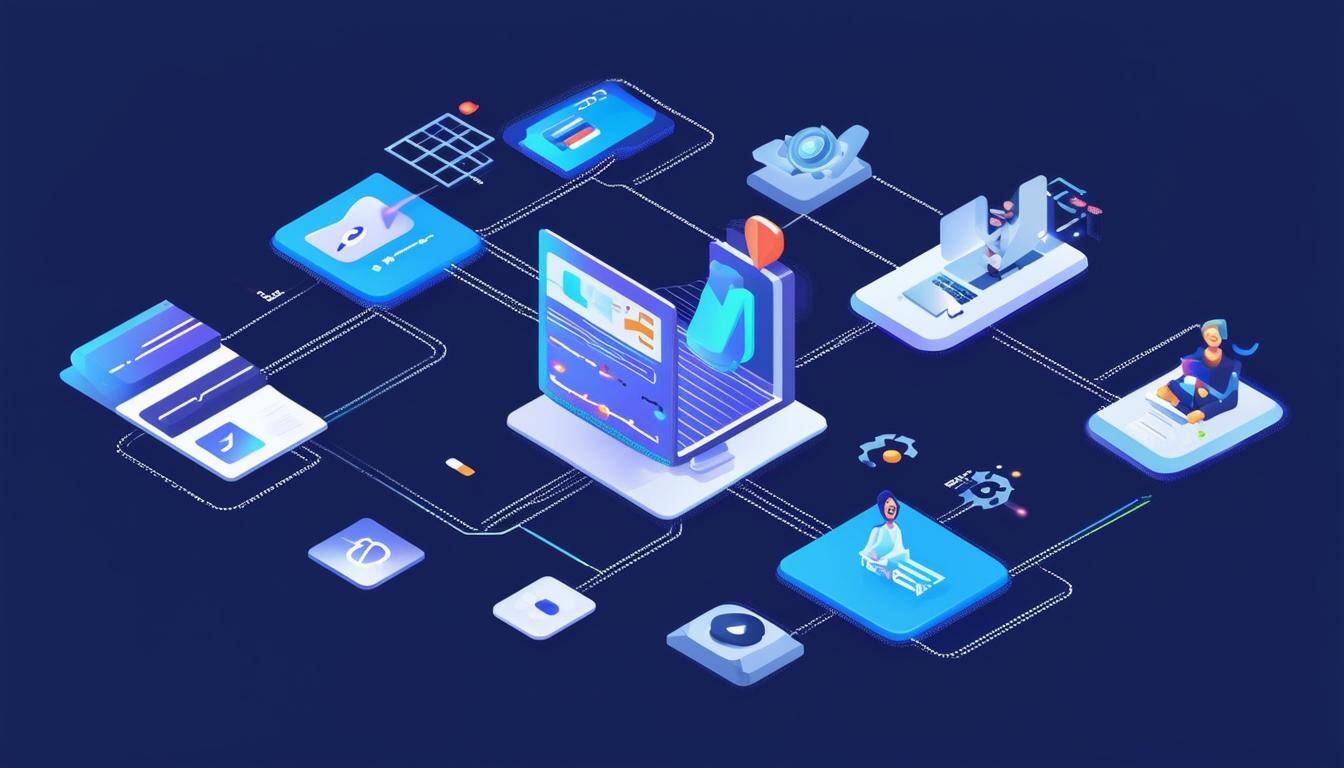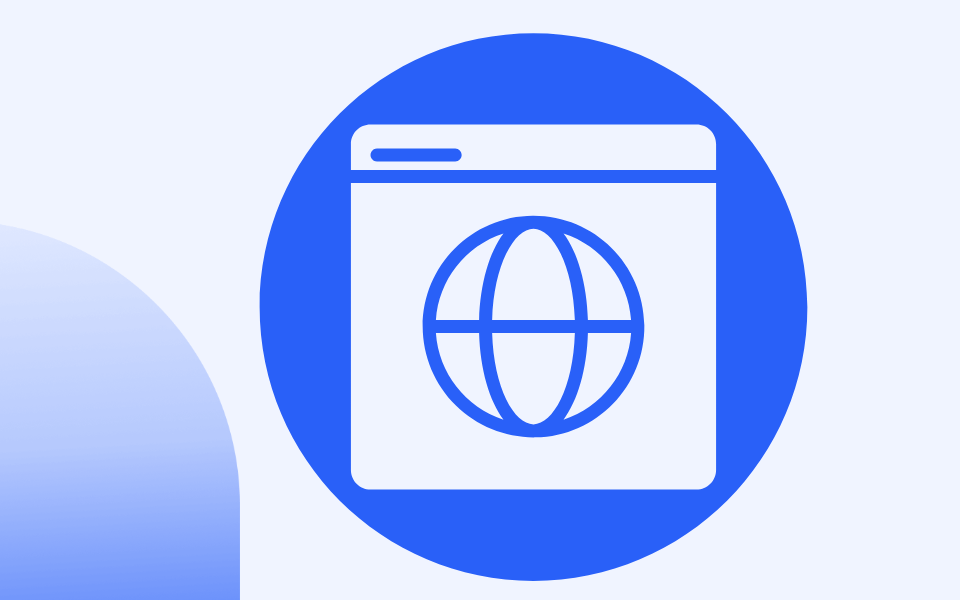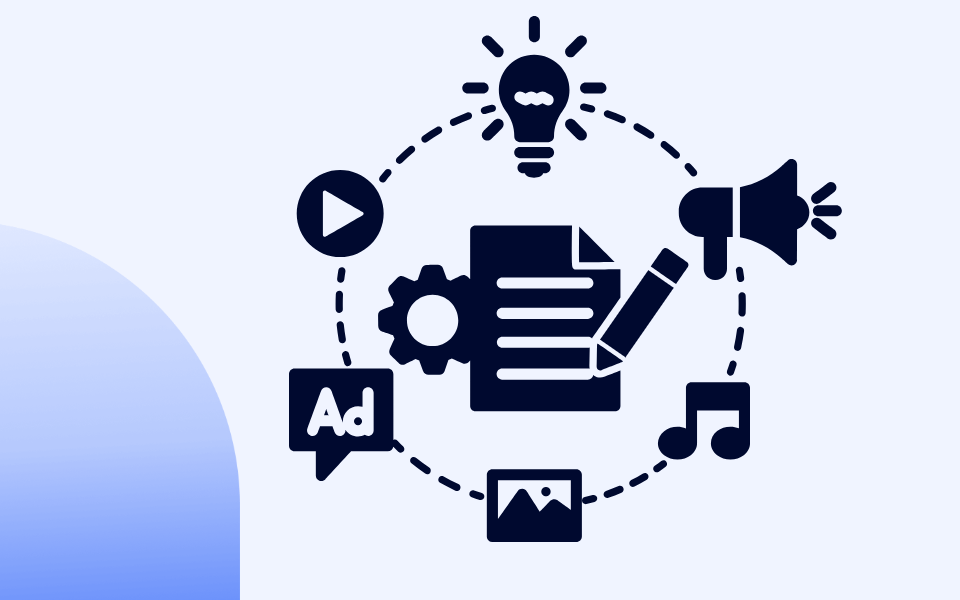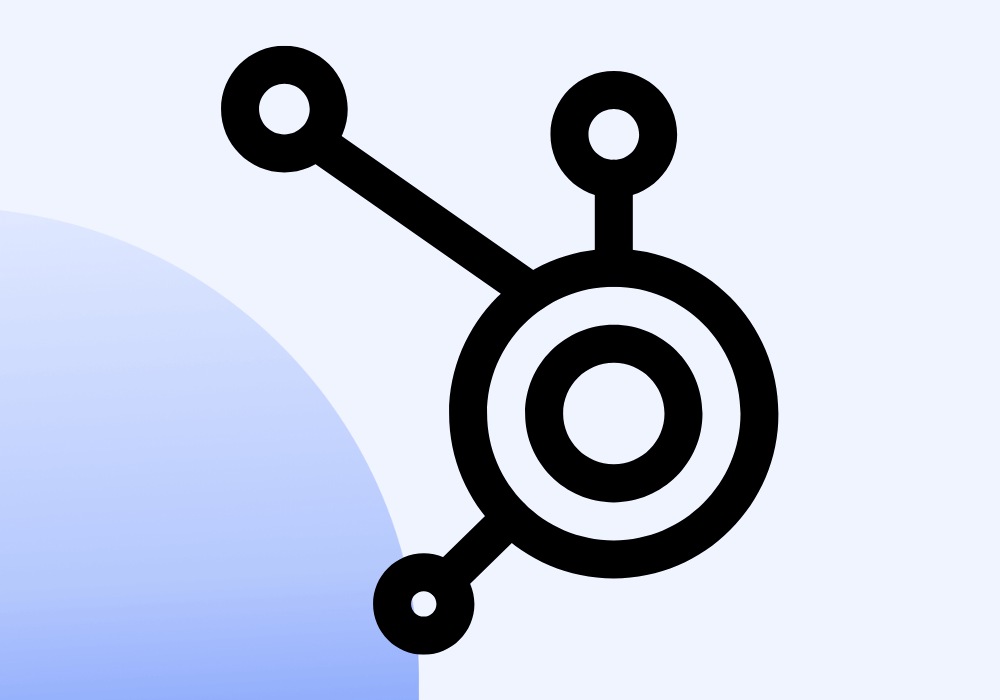What is the HubSpot Content Hub? (2025)
Guide to Successful HubSpot Marketing Onboarding

Picture your company growing effortlessly, with all your marketing tools connected and those tedious tasks running on autopilot—all from a single platform.
This HubSpot Marketing onboarding guide will show you how to do precisely that.
I'll walk you through a smooth and effective HubSpot Marketing Onboarding step by step.
- Why HubSpot Onboarding Matters
- Choosing Your HubSpot Marketing Onboarding Path
- Creating Your HubSpot Marketing Onboarding Plan
- Keep Momentum After Completing Onboarding
By the end, you'll be set up to the best possible start with HubSpot Marketing Hub.
KEY TAKEAWAYS
1. Effective onboarding is essential for maximizing your investment in HubSpot Marketing Hub and ensuring you use its full potential.
2. Choose the right onboarding path by considering whether to do direct onboarding with HubSpot or partnering with a HubSpot Agency Partner.
3. Set clear goals and craft a tailored strategy before diving into the platform to align your efforts with your business objectives.
4. Follow a structured onboarding plan that includes technical setup, website forms, and setting up robust reporting and analytics.
5. Optimize and adapt by staying updated with new features, maintaining compliance, and investing in team development to sustain long-term marketing success.
Why HubSpot Onboarding Matters
Jumping into HubSpot Marketing Hub without a proper onboarding plan is like trying to assemble a complex puzzle without the picture on the box.
You might fit a few pieces together, but without the entire image, it's easy to feel lost.
Effective HubSpot Marketing onboarding is your roadmap—it helps you understand how all the pieces fit together to create a powerful marketing engine for your business.
When you take the time to go through a structured onboarding process, you're ensuring that you're not just scratching the surface of what HubSpot can do for you.
Instead, you're using HubSpot's full potential to automate tasks, personalize customer interactions, and analyze data for more intelligent decision-making in your company.
This means setting up your account correctly, integrating your existing tools, and tailoring the platform to meet your marketing goals.
But what happens if you skip or rush through onboarding?
It's like having a high-performance car and never taking it out of first gear.
You might get from point A to point B, but you'll miss out on the speed and efficiency that makes the journey exciting and worthwhile.
So, why should you care about proper onboarding?
First, you'll get the most out of your investment in the HubSpot platform.
You're paying for a platform with many features, so using it to its fullest makes sense.
By properly onboarding, you're ensuring you get every ounce of value from HubSpot.
Second, you'll improve your marketing efforts right from the start.
You'll learn how to create targeted campaigns, automate follow-ups, and nurture leads effectively, which will set you up for success in attracting and retaining customers.
Third, you'll avoid common mistakes.
By understanding best practices and being aware of common mistakes, you can avoid issues that could hinder your marketing efforts in the future.
The truth is that most HubSpot users never set up their portal correctly and never see the platform's actual value.
By prioritizing onboarding, you're setting yourself and your team up for long-term success.
Everyone will know how to use the tools at their disposal effectively, and you'll align your marketing strategies with your business objectives more seamlessly.
Let's explore your onboarding options so you can choose the path that best suits your needs.
Choosing Your HubSpot Marketing Onboarding Path
Now that you understand the importance of effective onboarding let's explore the different paths you can take to start with HubSpot Marketing onboarding.
Essentially, you have two main options: onboarding directly with HubSpot or partnering with a HubSpot Agency Partner. So, which one is right for you?
Path #1: Onboarding Directly with HubSpot
If you prefer a hands-on approach and like working directly with the source, onboarding with HubSpot might appeal. HubSpot offers a standardized onboarding process guided by its team of experts.
You'll follow a set methodology that walks you through account setup, basic configurations, and essential tools to get you up and running.
This option might be ideal for you if:
- You have a relatively straightforward business model.
- You're comfortable with a general setup without needing extensive customization.
- You have the internal resources to manage the onboarding tasks with some guidance.
- You have the time to do the onboarding yourself with the guidance of a consultant from HubSpot.
However, remember that this approach may not fully address the nuances of your business.
HubSpot’s standard onboarding is more of a one-size-fits-all solution, which might not be the best fit if you require tailored strategies or complex requirements.
Path #2: Partnering with a HubSpot Agency Partner
If you're looking for a more personalized experience, partnering with a HubSpot Agency Partner could be the answer.
Agencies specialize in customizing the onboarding process to align with your unique goals, challenges, and industry specifics.
They'll take the time to understand your business inside and out, ensuring that HubSpot is set up to support your objectives.
This option could be beneficial for you if:
- You need a tailored approach that addresses your specific needs.
- Your business model is complex or requires specialized configurations.
- You prefer hands-on assistance and strategic guidance.
- You lack the internal bandwidth to handle the onboarding process yourself.
- You are potentially willing to invest more in a more comprehensive onboarding.
Agencies often offer "white-glove" services, providing one-on-one support and taking on tasks directly so you can focus on what you do best.
Partners can also help with advanced features, complex integrations, and compliance considerations like GDPR.
Ultimately, your choice depends on your needs, available resources, and goals.
If you're confident handling the setup with some guidance and have straightforward requirements, onboarding directly with HubSpot might suffice.
But if you're seeking a customized solution with expert support, partnering with an agency might offer more value in the long run.
Are you thinking about which path suits you best? Let's move on to setting your goals and crafting a plan to ensure you make the most of your onboarding experience.
Creating Your HubSpot Marketing Onboarding Plan
It is time to develop a practical onboarding plan to get you up and running with HubSpot Marketing. Start by pinpointing what you want to accomplish with the HubSpot Marketing Hub.
- Are you aiming to attract more qualified leads to your sales team?
- Do you want to strengthen relationships with your existing customers through targeted content?
- Are you focusing on high-value accounts that require personalized marketing efforts?
- Is ensuring GDPR compliance and robust data governance a priority for you?
By identifying your primary objectives, you can tailor the onboarding process to focus on the features and tools that will significantly impact your business.
I'll guide you through essential steps—from the initial setup to leveraging advanced features—so you can maximize the HubSpot Marketing Hub's offerings.
Phase 1: Account and Technical Setup

Before launching any campaigns, you must set up your HubSpot account and ensure all the technical pieces are in place. Here's how you can get started:
Connect Your Domain(s)
- If you are hosting your website on the HubSpot Content Hub, connect your primary domain (e.g., yourcompany.com) to HubSpot.
- If you host subdomain content, you'll use it for landing pages, blogs, and emails (e.g., info.yourcompany.com or blog.yourcompany.com).
- In your domain registrar, add the CNAME records provided by HubSpot to host content seamlessly through the platform.
Configure Email Sending
- Authenticate your email domain to improve email deliverability by adding DNS records for DKIM, SPF, and DMARC, as instructed by HubSpot.
- DKIM verifies that your emails aren't altered during transit.
- SPF specifies which mail servers are permitted to send email on your behalf
- DMARC builds on DKIM and SPF to protect against email spoofing and phishing.
- Set up subscription types by defining the categories of email communications you'll send (e.g., newsletters, promotions) so your contacts can manage their preferences.
Install Tracking Codes
- Determine if you need to install the tracking code. If your website does not use HubSpot's CMS System in the Content Hub, you must manually install it.
- You can skip this step entirely using the HubSpot CMS to host your website.
- If you use solutions such as WordPress, install the tracking code using a plugin or by pasting it into your website's header to collect data.
Set Up Data Privacy and GDPR Compliance
- Ensure GDPR features are enabled in your account settings if applicable.
- Customize consent language to match your company's voice and legal requirements, ensuring transparency with your contacts.
Manage Email Subscription Types
- Enable your contacts to select communication types, enhancing their experience.
- Make translations of each subscription type of your service in multiple markets.
- Ensure the system suppresses emails to opted-out contacts, maintaining compliance.
Import Your Data
- Prepare your data by cleaning your lists of contacts and companies, removing duplicates, and updating the information you want to migrate to HubSpot.
- Use the import tool to bring your contacts into HubSpot, mapping data fields appropriately to lay the groundwork for personalized marketing.
- You can also consider third-party migration tools such as Datawarehouse or SyncMatters.
Organize Your File Manager
- Structure your file manager to make organizing files in your HubSpot portal easy.
- Upload images, documents, and other resources you'll use in your marketing efforts.
- Integrate tools such as Adobe Express or Canva to add images to your content easily
Connect Social Media Accounts
- Integrate your LinkedIn, Facebook, Twitter, and other social media accounts with HubSpot.
- Add your team's LinkedIn profiles so you can publish content from HubSpot.
Integrate Ad Platforms
- Connect your LinkedIn, Facebook, and Google Ads accounts to HubSpot.
- Enable tracking to monitor ad performance and conversion contribution for better ROI analysis.
Integrate Third-Party Tools
- If you use tools such as Slack, Microsoft Teams, and PandaDoc, you can integrate them with HubSpot to move data between apps you already use.
- For more complex integrations, consider using tools such as ConnectMyApps, n8n, Make, or Zapier or developing your custom integrations.
- Ensure seamless data flow between platforms by connecting to CRM or ERP systems.
Phase 2: Lead Capture and Forms
With the account essentials in place, you can now focus on your primary marketing objectives. Let's tackle them step by step.
Goal 1: Capture and Convert Leads

Activate Target Accounts (ABM)
- Activate the Account-Based Marketing features inside your HubSpot portal.
- Create lists to segment the different buyer roles and companies inside of HubSpot.
- Integrate your LinkedIn Ads account with HubSpot for targeted campaigns.
- Identify high-value accounts that match your ideal customer profile using Breeze AI.
- Create targeted campaigns specifically for these accounts to increase conversion rates.
Define your Ideal Customer Profile (ICP)
- Develop detailed profiles of your ideal customers, including their challenges and goals.
- Upload your target accounts to HubSpot and segment companies into tiers and industries.
- Build lists using databases and prospecting tools like Ocean, Clay, and Breeze.
Set Up Website Forms
- Design user-friendly forms and pop-ups to capture visitor information, asking only for essential details so that you can send qualified leads to your sales team.
- These forms are usually where visitors can request pricing information, a quote, or a meeting with your sales team. These forms are directly connected to HubSpot and notify sales.
- Place forms on high-traffic pages or use exit-intent pop-ups to maximize lead capture.
Design Compelling Calls-to-Action (CTAs)
- Use HubSpot's CTA builder to create buttons and banners encouraging actions like downloading a guide, requesting a quote from sales, or signing up for a webinar.
- Experiment with different designs and messages to find what resonates best with your audience.
Implement Lead Scoring
- Assign points based on actions (e.g., email opens, link clicks) and properties (e.g., job title).
- Configure your lead scoring model in HubSpot to automatically qualify leads for sales outreach.
Leverage Buyer Intent Signals with Breeze AI
- Use buyer intent with Breeze AI to see which companies are visiting your website and showing interest. Then, Breeze will enrich the company record and notify sales.
- Set up specific target markets within HubSpot and define intent based on the count of visits, unique visitors, and pages being viewed.
- Ensure HubSpot’s tracking code is installed to match website visits to companies. HubSpot will use this data to create a dataset that will identify visiting companies.
Goal 2: Engage and Nurture Leads

Map Out Nurturing Strategies
- Decide what content to send at each stage of the buyer's journey and group your contacts by interests or behaviors for more relevant messaging.
- Use HubSpot to nurture your contacts using targeted email marketing, organic content, and paid advertising to nurture your prospects.
Create Email Marketing Campaigns
- Use the drag-and-drop editor to design engaging, brand-consistent emails.
- Plan emails for optimal times based on audience behavior and time zones.
Set Up Marketing Workflows
- Build workflows that trigger actions based on contact behavior, like downloading a resource.
- Use If/Then logic to personalize journeys with branching paths depending on interactions.
Define Lifecycle Stages and Lead Status
- Use HubSpot's default lifecycle stages, such as Subscriber, Lead, MQL, SQL, and Customer, or create your own to segment where a prospect is in the buyer journey.
- Use a combination of forms, lead scoring, and workflows to categorize each contact by the appropriate lifecycle stage at which they engage with your content.
- Notify the sales team when a prospect reaches the Sales-Qualified Lead (SQL) lifecycle stage.
- Use Lead Status to segment which SQLs the sales team has contacted or not.
Create an Email Welcome Series
- Design a series of emails to introduce your brand and provide value with helpful content.
- Include CTAs to encourage actions like reading a blog post or registering for an event.
Goal 3: Automate and Personalize Marketing

Automate Manual Tasks
- Identify repetitive tasks that can be automated, like follow-up emails or notifying sales about new inbound leads from the website.
- Use workflows to handle these tasks, freeing your team for strategic initiatives.
Develop Smart Content
- Personalize website content based on visitor lifecycle stage or persona.
- Use personalization tokens in emails for a one-on-one feel, boosting engagement.
Enhance CTAs with Personalization
- Use Smart CTAs to display different calls-to-action based on the viewer to increase conversions.
- Continuously improve CTAs using performance data by changing the offer and copy.
Advance Your ABM Strategies
- Use account insights to tailor content further to specific segments or target accounts.
- Align your marketing with sales activities for a unified approach when targeting specific accounts by creating tailored marketing campaigns and sales outreach.
Phase 3: Advanced Marketing Features
With the basics covered and results showing, you can explore HubSpot's advanced features to elevate your marketing.
Manage Multiple Business Units
- HubSpot makes it simple to organize multiple brands within HubSpot to keep data separate yet accessible to maintain brand consistency by tailoring each unit's look and feel.
Implement Advanced Segmentation
- Build auto-updating lists based on contact criteria with dynamic lists.
- Segment contacts by website activity and email engagement criteria for precise targeting.
Scale Globally
- Localize content to connect with a broader audience by supporting multiple languages.
- Schedule communications for optimal times worldwide by adjusting to time zones.
Develop Complex Workflows
- Create workflows with multiple branches for sophisticated processes using advanced logic.
- Trigger actions in other tools through integrations for a seamless ecosystem.
Establish Data Governance
- Set data collection, storage, and usage guidelines by defining data policies.
- Regularly review practices to align with regulations and maintain trust.
Create Custom Reports
- Focus reports on metrics that matter most by tailoring dashboards to provide clarity.
- Make data accessible to inform team decision-making by sharing insights.
Utilize Custom Objects
- Create custom objects for data that don't fit standard categories to store unique data.
- Link custom objects to contacts or deals for a fuller customer view, enhancing relationships.
Phase 4: Marketing Reporting
Understanding your marketing performance is critical to continuous improvement.
Set Up Marketing Dashboards
- Track website traffic, conversions, email engagement, and more in one place.
- Highlight the most important data at a glance by customizing views.
- Make dashboards for each marketing function and app (.e.g., landing pages).
- Hide dashboards that are not relevant for specific users or teams.
Track ABM Performance
- Use ABM dashboards to view your target accounts' engagement and pipeline progression.
- Adjust your ABM approach based on insights for better results.
- Use enrichment tools such as Clay or Breeze AI to enrich records further.
Keep Momentum After Completing Onboarding
Congratulations on aligning HubSpot Marketing Hub with your goals and launching your campaigns! But remember, onboarding is just the beginning of your growth.
Here's how to keep the momentum going:
1. Set New Marketing Goals: Establish new marketing goals to continue growing as you achieve your objectives. This could be goals for traffic, conversion rates, leads, or pipeline.
2. Leverage AI for Content Creation: AI tools such as ChatGPT and Claude can help a small marketing team make high-quality content. Learn how to use these tools to grow traffic and leads for your company.
3. Explore New Features: HubSpot is constantly launching new marketing features. Stay updated with HubSpot's latest releases that could benefit your marketing strategy.
4. Create Comprehensive Guides: Outline your HubSpot setup, processes, and best practices. Store documentation in a shared company wiki or project management tool so new team members can learn efficiently and existing users can refresh their knowledge.
5. Maintain Compliance. Ensure your data practices comply with GDPR and other regulations. Regularly merge duplicate records, remove outdated emails, and keep your CRM clean.
By following this plan, you're well on your way to making HubSpot Marketing Hub a cornerstone of your marketing success. Remember, the key isn't just setting it up but continually engaging with the platform, adapting strategies, and leveraging new features as they roll out.


